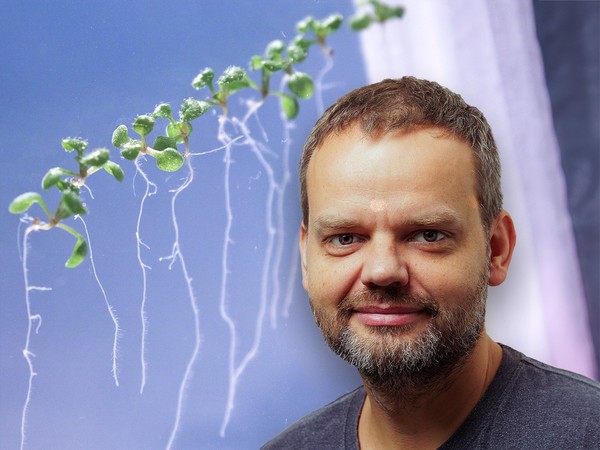Miroslav Kvasnica from the Laboratory of Growth Regulators, a joint workplace of the Palacký University Faculty of Science and the Institute of Experimental Botany of the Czech Academy of Sciences (CAS), was involved in the discovery of the protein “transporter” of brassinosteroids from the inside of the plant cell to the outside. The discovery is a breakthrough in the previously quite incomplete knowledge of the movement of these phytohormones through the plant. In the future, this may be of practical importance for breeding more profitable and resistant crops. The research results were published in the prestigious journal Science.
Just like animals and humans, plants also have hormones – substances that, even in low concentrations, regulate the growth and development of the organism and its physiological responses to various stimuli.
Brassinosteroids are an important group of these phytohormones. They influence many fundamental processes: cell division and elongation, stem and root bending in response to light or gravity, development of conductive tissues, sexual reproduction, and responses to adverse environmental conditions such as heat, cold and drought.
From this list, it is already clear that brassinosteroid research is of great practical importance. Information gained on their effects on plants could be used in the future to breed new varieties of crops that will grow better or be more resistant to stress. Since the discovery of brassinosteroids in the 1970s, scientists have accumulated much knowledge about them. Their physiological effects and the biochemical reactions by which they are produced in plants are now relatively well-known. The molecular processes they trigger in cells have been mapped. However, the transport of these hormones – i.e., how they move through the plant – has remained a mystery.
Only recently have scientists begun to unravel that mystery. Much credit for this goes to the Laboratory of Growth Regulators team led by Miroslav Kvasnica and Jana Okleštková, who have long been involved in the physiology, chemistry, and analysis of brassinosteroids.
How do brassinosteroids get from the cells where they originate to the intercellular spaces where they act? The answer was provided by a study published in Science. Experts from China, Belgium, and the Czech Republic were the first in the world to identify a protein located on the cell surface that transports brassinosteroid molecules outwards. “As part of this research, it was also necessary to determine whether the transport protein selectively transports only the hormonally active brassinosteroid, or also the compounds from which the hormone is formed in the cells (precursors) or other plant steroids. The substances that I prepared with my team have helped to confirm that the transport is indeed selective,” Kvasnica explained.
The discovery of the first ever brassinosteroid “transporter” is a major achievement. However, its identity is surprising: the protein, ABCB19, has long been known to transport another important plant hormone – auxin. Figuratively speaking, scientist do not yet know how ABCB19 decides which hormone to transport. It is clear that we can look forward to further interesting findings in brassinosteroid research.
